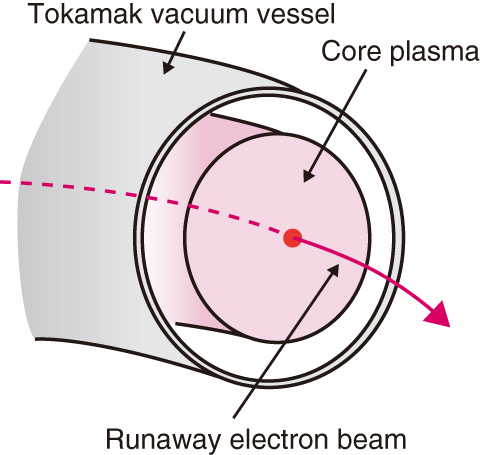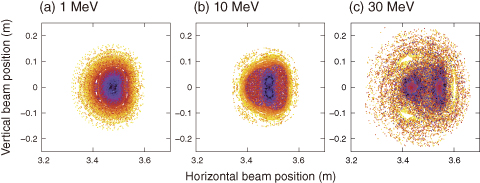
Fig.9-23 Schematic of core plasmas and the runaway electron beam

Fig.9-24 Simulation of a high-energy electron orbit with magnetic perturbations
During tokamak operation, a quench of the plasma current, being inherent to the confinement of core plasmas, often occurs due to various internal and external causes, which we call “disruptions.” In future DEMO and commercial reactors, the operation regime must carefully be chosen to avoid such disruptions. On the other hand, in present machines aimed at extending the operational regime so that high-performance tokamaks realize fusion energy, uncontrollable disruptions often occur in experiments.
It is important to understand the physical phenomena involved in disruptions, which are not observed in normal plasma operation. Particularly, the generation of a beam of energetic electrons (Fig.9-23), which is called as “runaway electrons (REs),” is one of the most important topics for the disruption study. REs often attain energies of several tens of MeV through the conversion of magnetic to kinetic energy, which can cause serious damages to the in-vessel components. However, detailed mechanisms of RE generation during tokamak disruptions have not yet been elucidated. To improve our understanding of the interaction between REs and magnetic perturbations, which has been conventionally investigated using relatively simple models, we have developed a new simulation code for analyzing high-energy electron orbits while considering the detailed structure of magnetic perturbations during disruptions.
Using the developed code, we have analyzed the RE orbit for JT-60U scale disruptions and found a novel mechanism such that only high-energy REs above 10 MeV exhibit unstable trajectories and significant radial transport (Fig.9-24). In previous studies, the confinement of such high-energy REs was considered to improve because high-energy REs deviate from magnetic field lines owing to the centrifugal force, and tend not to feel magnetic perturbations. The present calculation has clarified the possibility that high-energy REs exhibit strongly disturbed trajectories compared with low-energy ones. Our simulation shows that such energy dependence is explained by the interference between the magnetic perturbation and the periodic motion of high-energy REs, which occurs if their own characteristic frequencies satisfy a certain condition.
The findings obtained in this study provide a clue toward understanding the RE generation mechanism and offers a physical basis for the control of disruptions and REs in ITER and DEMO reactors.